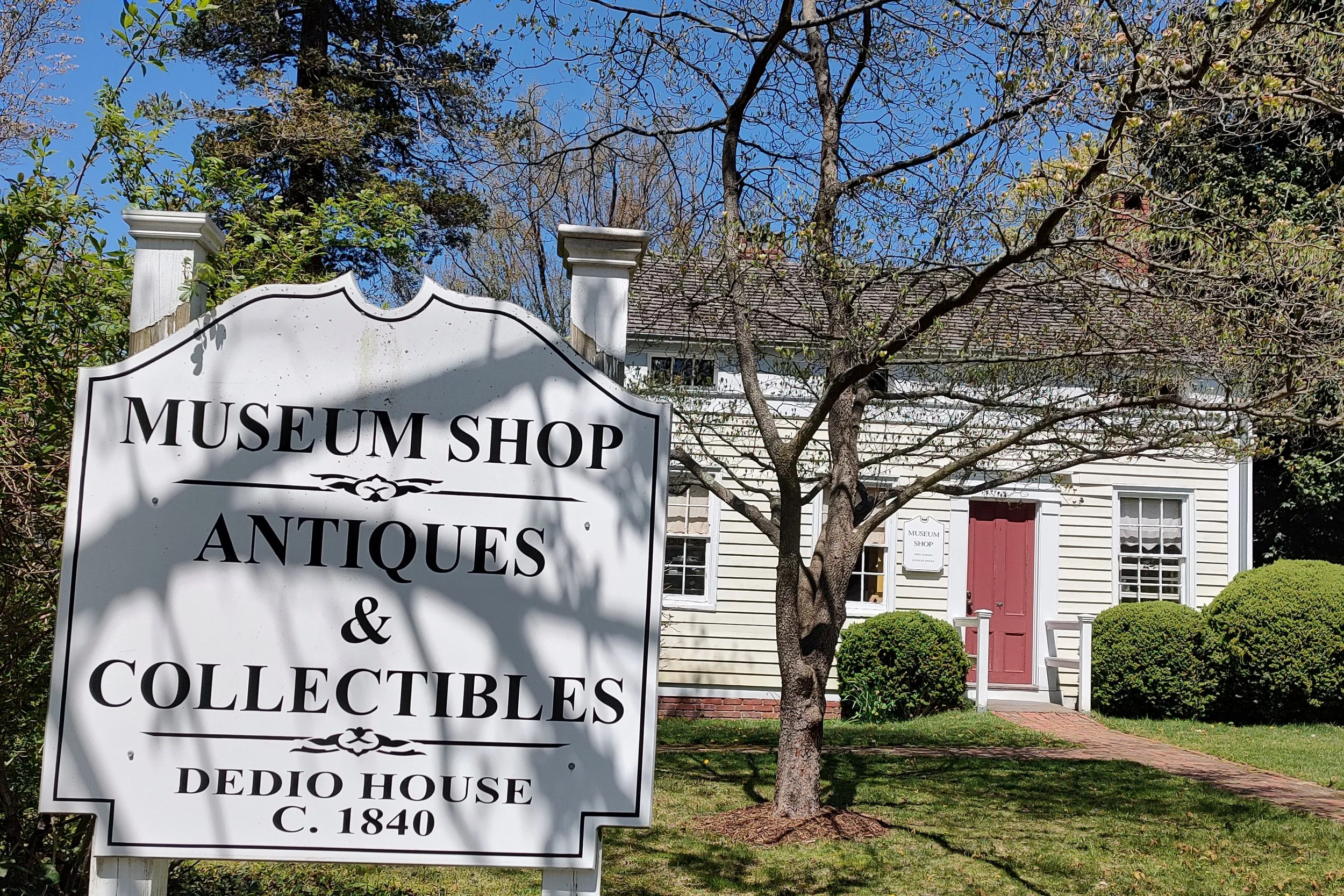About the Society
The Historical Society of Greater Port Jefferson was founded in 1967. Its purpose is to discover, preserve, and disseminate knowledge about the history of the Greater Port Jefferson area. Public meetings with historical presentations are held throughout the year. The Society also prepares annual exhibits and displays in the Mather House Museum. Our photographs and documents are available to researchers by appointment. An annual fundraising Auction is held in the fall and an Antiques and Gardens Show and Sale is held in the spring.
About the Museum
Starting Saturday, May 25th, The Mather Museum will be open Wednesdays through Sundays, 12 - 4 p.m. A docent-guided tour is available for the main museum and the complex buildings. Donation requested.
For information and directions please call (631) 473-2665. You are cordially invited to become a member.
The Mather House
The Society maintains the Mather House Museum Complex which is open for guided tours from May through October. The Society also prepares Annual Exhibits, runs an Annual Fall Country Auction and the Antiques and Garden Show in the Spring. It produces an annual historical photo calendar each year as a fundraiser and publishes a newsletter – “The Echoes of Port.” The Society also prepares annual exhibits and displays in the Mather House Museum.
Museum Collections
The Society’s collection of historical artifacts is displayed at the Mather House Museum, along with special exhibits. Our collections include: ship models, half-hull models, period furniture and paintings by local artists William Davis and Leon Foster Jones, old photographs, maps, shipbuilding and sail making implements, vintage clothing and antique games and toys.
Our History
Port Jefferson was first settled by colonists in the 17th century and remained a rural community until its development as an active shipbuilding center in the mid-19th century. The village has since transitioned to a tourist-based economy. The port remains active as the terminus of the Bridgeport & Port Jefferson Ferry, one of two commercial ferry lines between Long Island and Connecticut, and is also supplemented by the terminus of the Long Island Railroad's Port Jefferson Branch. It is also the center of the Greater Port Jefferson region of northwestern Brookhaven, serving as the cultural, commercial, and transportation hub of the neighboring Port Jefferson Station, Belle Terre, Mount Sinai, Miller Place, and the Setauket communities.
The original settlers of the Town of Brookhaven, based in the neighboring hamlet of Setauket, bought a tract of land from the Setalcott Indians in 1655. The deed included the area of contemporary Port Jefferson along with all other lands along the North Shore from the Nissequogue River eastward to Mount Misery Point. Port Jefferson's original name was Suwassett, a Native American term for either "place of small pines" or "where water opens."
The first known home within the present village boundaries was erected in the early 1660s by Captain John Scott, an interesting character in Long Island's early history. This house, named Egerton, was a grand one on the western end of Mount Sinai Harbor at Mount Misery Neck. The first settler in Port Jefferson's current downtown was an Irish shoemaker from Queens named John Roe, who built his still-standing home in 1682. It remained a small community of five homes through the 18th century and was renamed to "Drowned Meadow" in 1682. The villagers voted to change its name to Port Jefferson in 1836. The village was incorporated in 1963.
Port Jefferson was originally called Drowned Meadow because the downtown area was tidal and "drowned" by the tide twice a day. Today’s Main Street was created when Capt. William L. Jones built a causeway across the 22-acre salt marsh in 1836. The marsh was then gradually filled in. Today’s Main Street was first called Jones Street. Its businesses supplemented the village’s shipbuilding industry, which was the largest in Suffolk County. Four out of ten ships built in the county were constructed here. The village was the home of coastal schooner captains, blue water sailors, and seamen. Most families had at least one or two members building ships or at sea.




